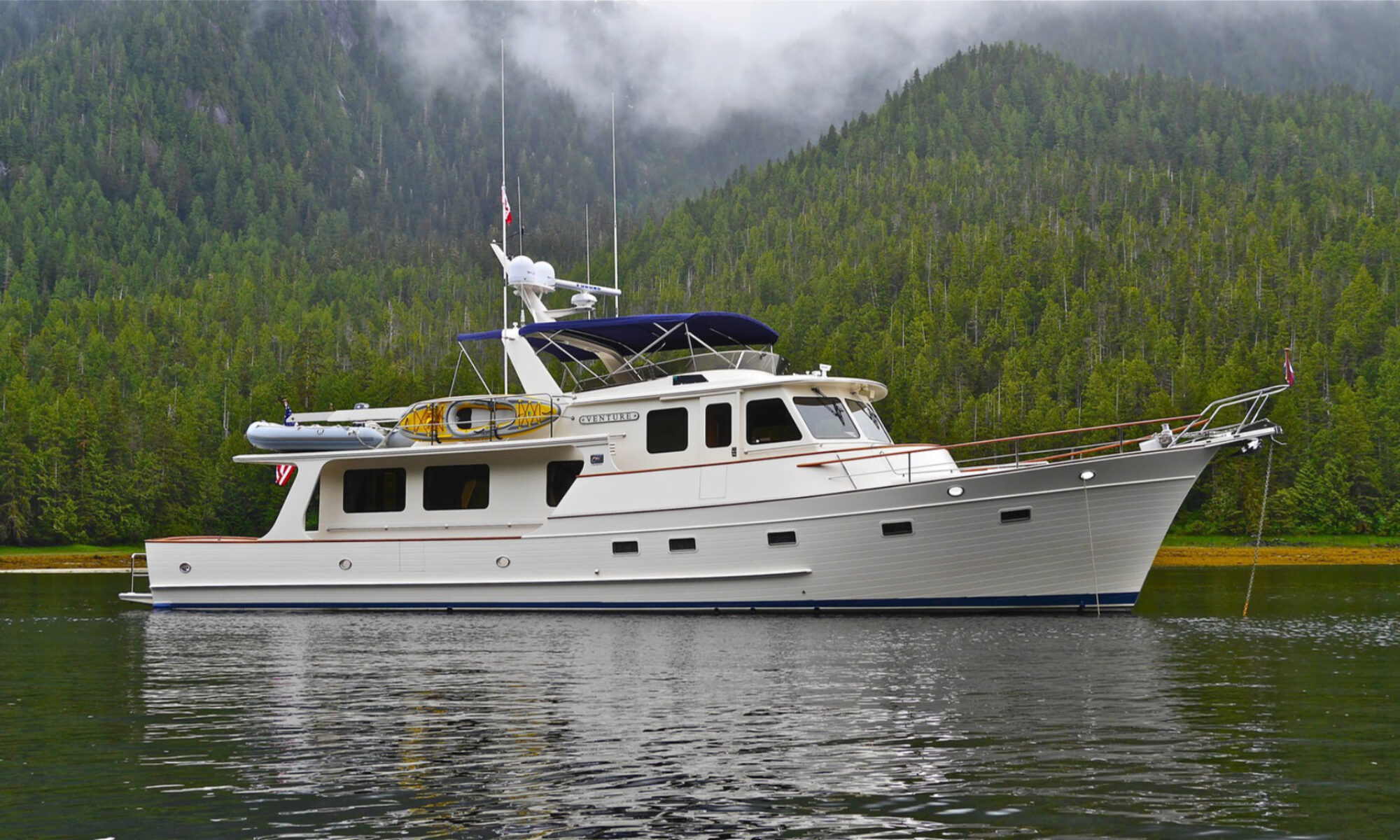Apart from the routine problems that routinely arise almost daily when building boats are those, usually much larger, which occur due to outside circumstances over which the builder has no control. A prime example was the luxury tax surreptitiously sneaked in over a weekend in June 1992 which precipitated a 77% drop in sales – resulting in the loss of 25,000 jobs in the US. Headline writers had a regatta with maritime puns.
How to sink an industry. Luxury tax sinks jobs.
Boat builders scuttled by Yacht Tax.
Boat Luxury tax drives an Industry Aground.
This ill-conceived tax was repealed in 1993 but other equally destructive moves such as the capricious imposition of a tariff (aka import tax), a sudden jump in the exchange rate, or even the irrational hoarding of copper or nickel can have a similar disruptive effect – and I have personally experienced them all.
Typhoon Wanda
Of course, there are also natural events and this story centres around the visit on September 1st, 1962 to Hong Kong of Category 5 super typhoon Wanda. It was the most intense tropical storm ever to affect HK and was the 59th tropical disturbance of the 1962 Pacific Typhoon season! This massive storm was 1,000 miles in diameter and its center passed within 10 miles of Hongkong. It had maximum wind gusts over the city of 180 mph. Its arrival coincided with high tide but the storm surge added 10’ to the height of that tide. Out of a total of 132 ocean-going ships anchored in the famous harbor, 24 were beached and 12 were involved in collisions. One finished up on the runway at KaiTak airport.
On the morning of the storm I was sheltering in my apartment on the top floor of a three-storey apartment building when I saw water running under my front door. I opened the door to investigate to see water cascading down the stairs leading to the roof. I ran upstairs to investigate and foolishly opened the door that led to the roof. The wind caught the door and flung it open, I went with it attached to the door handle. I was thrown across the flat roof and the pelting rain felt like needles being driven into my shirtless back. I quickly dropped to my knees and beat a hasty retreat.
I had seen that the roof was flooded several inches deep. I donned more clothes and returned to the roof, this time opening the door with a lot more caution. I soon found that the roof drain was blocked by leaves ripped off the trees. Using my hand I pulled the leaves aside and the water began to rush down the pipe sucking my hand with it until it was clamped across the top of the pipe so firmly that I could not remove it. I managed to slide it sideways using my other hand. Once the rushing water had filled the down pipe my hand had been supporting a column of water three stories high!
Looking over the low parapet, the scene was apocalyptic. Trees were thrashing around, the rain was traveling horizontally, and I could hear emergency sirens and see flames writhing into the air a couple of blocks away. I retreated back to my lair and wondered how the boatyard was fairing. Of course, I knew nothing about the storm surge which never crossed my mind.
After a couple of hours, the eye passed over the colony and the wind dropped almost to zero. Of course, I had to take a look. My VW Beetle started right up and I drove out to the boatyard in what are called the New Territories. I stopped at the top of the hill overlooking the bay where the yard was located. The yard was no longer at the edge of the sea – it was in the sea with substantial waves breaking through the boats under construction. I drove back into Kowloon and took a number of photos before returning home knowing that the winds would shortly return but from the opposite direction.
Aftermath
The following morning the storm was over and I drove back to Hang Hau village from which we had to take a sampan to reach the yard. At that time, there was no road to reach the yard – which included ourselves and all building materials – had to get there by water. What a mess! Much of the corrugated iron roofing had been ripped off and distributed over the nearby hillsides. The crews who would normally be building boats were sent out to bring as much of it back as they could find. In those days the boats were built upright and propped against the roof and the floor so, paradoxically, wherever there was a boat the building stayed up, and where there was no boat it fell down. We had not yet started to build the Grand Banks but we were building a round bilge trawler type boat called the Chanteyman. As can be seen in the accompanying photos several of these were tumbled around but none were seriously damaged. The biggest boat we ever built – a 65ft displacement boat, was lying on its side.
It took only about three days to bring some order to the shambles and the same applied to HK as a whole. The resourcefulness and resolution of the people was amazing.
The local manager who lived with his family in a clinker built house on the hill above the boatyard told me that at the height of the storm, fist-sized rocks were coming through the wall of his house like cannonballs. His son, incidentally, now works for Apple in Cupertino.

